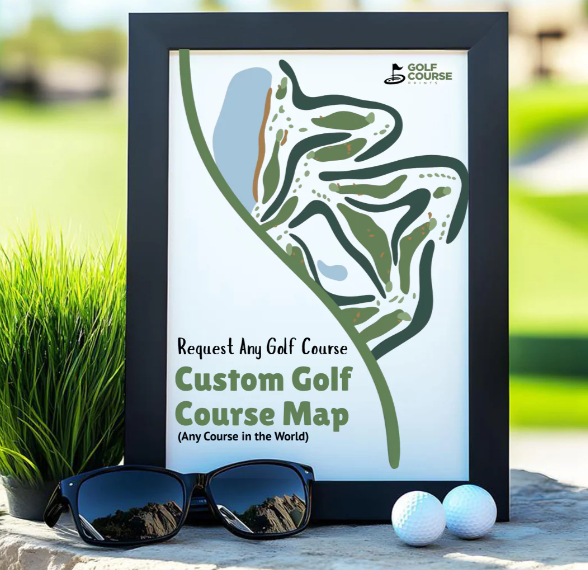For golf lovers, there’s something magical about seeing a course not just from the tee box, but from a bird’s-eye view. The fairways, bunkers, water hazards, and greens together form a masterpiece of design. That’s where golf course maps and blueprints come in. These detailed layouts are not only essential for players looking to improve their strategy, but they also serve as stunning pieces of decor for anyone who appreciates the beauty of the game.
In this article, we’ll explore how golf course maps are used, why they matter, and how they’ve grown into both functional tools and stylish conversation starters.
Why Golf Course Maps Matter for Strategy
Every golf course is unique, with its own quirks and challenges. A golfer stepping onto a new course needs more than just yardage numbers—they need perspective. Golf course maps provide that.
By offering a detailed look at the full layout, these maps allow players to plan their approach. They can see:
- Where bunkers and hazards are strategically placed
- How fairways curve and dogleg
- The best landing zones for different clubs
- How greens slope and where to aim for the best putt
Professional golfers often study detailed course blueprints before tournaments, but even casual players benefit from this insight. Knowing what’s ahead not only builds confidence but also reduces unnecessary mistakes.
The Art of Golf Course Design in Maps
Behind every great course is a visionary designer. Legends like Alister MacKenzie, Donald Ross, and Pete Dye spent years perfecting layouts that challenge and inspire golfers. Golf course maps and blueprints capture that artistry.
When you look at one of these maps, you’re not just seeing fairways and greens—you’re seeing the designer’s vision. Each hazard placement, elevation change, and green contour tells a story. A good map helps players appreciate the thought that went into creating a balance of risk and reward.
For many enthusiasts, collecting maps of famous courses feels like collecting works of art. Augusta National, Pebble Beach, St. Andrews—each one has its own identity that’s instantly recognizable in map form.
Golf Course Maps as Home or Office Decor
Beyond their strategic value, golf course maps have become highly sought-after decor pieces. Golfers love bringing their passion into their homes, and a framed map of a favorite course does exactly that.
- Conversation Starter: A guest notices the iconic layout of Pebble Beach on your wall, and suddenly you’re sharing stories of your round there.
- Sentimental Value: Maybe it’s the course where you scored your first birdie or the one you played on a dream vacation. A map keeps that memory alive.
- Aesthetic Appeal: Clean, detailed blueprints have a timeless look that fits in offices, man caves, and living rooms.
Many companies now specialize in high-quality prints of courses from around the world. Whether minimalist line drawings or full-color detailed renderings, these maps transform a golfer’s love for the game into art.
Collecting and Gifting Golf Course Maps
For gift-giving, golf course maps are a home run. They combine thoughtfulness with personalization, making them perfect for birthdays, Father’s Day, or retirement gifts. Instead of another generic golf accessory, a map shows that you know the recipient’s favorite course and want to celebrate it.
Some golfers even create collections over time, displaying maps of every course they’ve played. Imagine a wall filled with the layouts of all the bucket-list courses you’ve conquered—it’s like a scrapbook in art form.
And with digital printing technology, it’s easier than ever to find or customize these maps. Whether it’s a famous course like Augusta or a local hidden gem, there’s a good chance you can have its blueprint hanging on your wall.
How Golf Course Maps Blend Function and Beauty
The beauty of golf course maps lies in their versatility. On one hand, they are practical tools for understanding a layout and improving your game. On the other, they are elegant pieces of design that stand out as artwork.
Think about it this way: a golfer can study a course map before their round, then hang that same map in their home as a reminder of the experience. It’s both functional and sentimental—a rare combination.
For interior design, these maps also bridge the gap between sport and style. They offer a subtle way to showcase personality without being overwhelming. Even non-golfers often appreciate the symmetry and detail in the layouts.
The Future of Golf Course Maps
As technology evolves, so do maps. Digital versions now allow golfers to zoom in on holes, analyze elevation, and even simulate shots. Apps and GPS systems incorporate interactive versions of traditional blueprints.
Yet, there’s still something irreplaceable about a physical map or blueprint. Just like vinyl records survived the age of streaming, printed maps hold charm and authenticity that digital tools can’t replicate.
For the golf world, this means we’ll continue to see a blend of tradition and innovation—interactive course guides for players, and artistic blueprints for collectors and decorators.
Final Thoughts
Golf course maps are more than just diagrams—they are stories, memories, and works of art. Whether you’re studying them to sharpen your strategy or framing them to decorate your home, these layouts capture the heart of the game.
From the lush fairways of Augusta to the rugged coastline of Pebble Beach, every map tells a story worth celebrating. For golfers, they’re reminders of challenges faced, shots made, and experiences cherished. And for homes and offices, they’re stylish additions that connect passion with design.

